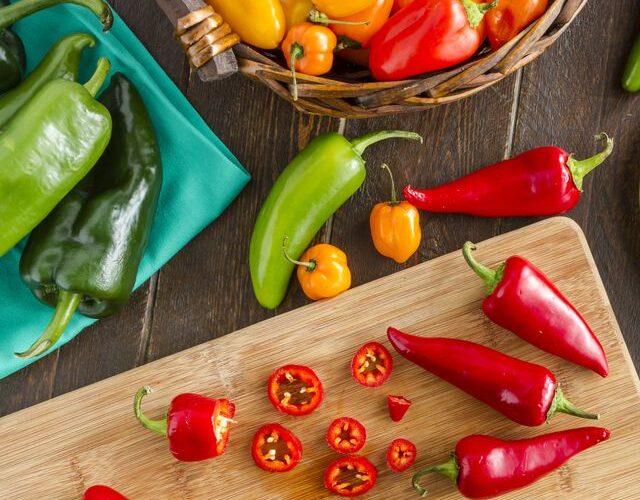Concrete is the most popular material for renovation projects, including patios and driveways. Concrete is often the ideal balance of durability and cost-effectiveness when compared to other choices. Modern solutions come in a variety of styles and colors to fit almost any design. Is there, however, equality among concrete products?
Chilies or Capsicums

Capsicums and Chillies are not to be confused with one another. The difference between them lies in their respective plants’ origins; while Capsicum comes from red (or purple) seeds, Chilis possess spicy heat that can irritate the palate of some animals such as deer or rabbits who may threaten these sweet fruits if grown too closely near edible crops without proper consideration for safe hiding places where they’ll remain out-of bounds!
Growing capsicum plants from seed can be a long process. Packets of seeds contain 12 different varieties of the plant. Perhaps if one day someone discovers a medicinal purpose for capsicum or some really nasty cough remedy, then it may be discovered that there are viable commercial uses for the plant. In the meantime, however, enjoy the varied multitude of the plant. It is truly fascinating.
Cultivation of the capsicum plant
You can grow the capsicum plant straight from seed or from young plants the same as one would tomatoes. Growing them from seeds can be a rewarding and fulfilling experience. It needs a bit more time and effort, but it is really satisfying to see them flourish into fruiting plants.
The plant is really quite hardy and can tolerate a range of different climates. The fruits are bigger than those of the cherry tomato and have more texture. They are also sweeter. It is also a good idea to select a site in your garden where the plant is exposed to full sunlight. In addition, to really apply all your skills in horticulture, you should consider the tending the plants in the summer and harvesting them in the fall.
Harvesting the capsicum plant
The plant will be ready for harvesting when the fruits are of large in size, have started to soften and turn color, and have started to feel plumpness in texture. Remember that the plant will be around for around ten weeks. You want to harvest them before the onset of flower and bud switching. You can expect a few weeks for the plant to produce fruits. But some varieties of the plant will take a little longer, around four to six weeks. In this case, you would cut the flowers and buds, leave the meat and roasted green tomatoes hanging and let the plant slowly ripen.
Hanging the capsicum is a little more tedious, but it is an option. You will have to select the best leaves and then cut them. Leave a couple of leaves on the plant and remove the less tasty ones. You will have to hang the capsicum out of the direct sun and make sure they are dry. You can also place them in a paper bag with punched holes for air to get in and out. They should stay this way for several months.
Freezing is also a possibility, but you will need to make some hybrids to handle the low temperatures in a cellar environment. You will need to create a rooting compound or mixture and put it in a good amount of water. The watering can be one-third ice cubes and one-third water. When the plant begins to grow, the roots will start to grow in the water, and the stems will start to grow in the ice. It usually takes around 10 days for this to happen. The plant will then start to produce roots throughout the rest of the winter.
If you choose to save your harvested capsicum, you can do so in the following two ways.
The first way is to wash the mycelium in a blender until it removes the powder. You then put the cubes in a container and cover them up with water. They should be rinsed several times a day to remove any additional powder. A simple oven method would be to put them in a container deep enough to cover them with water. Last but not least, they need to be blanched in cold water. This can be done by covering the cooking cube with olive oil and putting them in a oven set at a low temperature.
The other way of preserving your capsicum can last for several months. It’s a good idea to place them in hot water as soon as you harvest them. This method can be continued if you eat them within three days.



